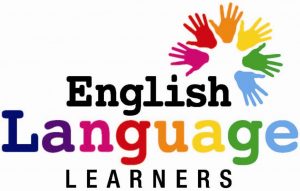 “English-language learners, or ELLs, are students who are unable to communicate fluently or learn effectively in English, who often come from non-English-speaking homes and backgrounds, and who typically require specialized or modified instruction in both the English language and in their academic courses. https://www.edglossary.org/english-language-learner/
“English-language learners, or ELLs, are students who are unable to communicate fluently or learn effectively in English, who often come from non-English-speaking homes and backgrounds, and who typically require specialized or modified instruction in both the English language and in their academic courses. https://www.edglossary.org/english-language-learner/Bluebee Pals can be excellent tools in teaching beginning ELL students!

- Bluebee is compatible with ALL apps with a narrative.
- Bluebee is compatible with text-to-speech apps
- Bluebee inspires learning with educational apps.
- Bluebee reads any storybook apps
- Bluebee sings with your favorite music apps.
- Bluebee acts as an educational tool with voice recording apps.
Let Bluebee Pals be the Teacher!
Usages with Bluebee Pals and ELL students:
1. One on One and/or Group Circle Time :
Use Bluebee connected to apps to teach students core curriculum concepts individually or in small groups. You can target comprehension, vocabulary, wh-questions, grammar, listening, speaking, sequencing, following directions, pronunciation, critical thinking, spelling and more! https://www.bluebeepals.com/apps-bluebee-pals/
Apps to get you started:
*Lingokids – English For Kids by Monkimun Inc. This wonderful app creates an individual English Learning Program for your student based on their language level and age. Their curriculum and graphics are beyond amazing. It focuses on language skills such as English pronunciation, vocabulary, ABCs, numbers, shapes, colors, animals, food, writing and more.https://apps.apple.com/us/app/lingokids-english-for-kids/id1002043426
*The Wanderful Collection by Wanderful, Inc. Interactive storybooks are great for teaching word pronunciation, word recognition, and meaning. Check out these books athttps://apps.apple.com/us/app-bundle/the-wanderful-collection/id922408673
*BrainPOP ELL by BrainPOP® is a comprehensive English language learning program that uses animated movies to model conversational English. It offers leveled learning for beginner, intermediate and advanced learners. It targets listening, speaking, reading, and writing. https://apps.apple.com/us/app/brainpop-ell/id813671555.
*Endless Alphabet by Originator Inc. Endless Alphabet shows students how each word is spelled and provides a fun illustration of it’s definition. Then it shuffles the letters and challenges your student to put the word back together. What makes it even more awesome is that when the students pick up each letter to put it back on the right place, the letter makes its sound! ELL students get to review the sound of each letter, the spelling of each word and its definition through super entertaining and interactive illustrations! https://apps.apple.com/us/app/endless-alphabet/id591626572
*Fun English | Learn English by Studycat Limited This app covers all 4 language domains through fun games, stories and songs! New vocabulary is introduced in creative contexts to help students remember each meaning and is used in sentences to maximize their understanding. Lessons are divided into different categories that will allow your student to review different concepts and ideas.https://apps.apple.com/us/app/fun-english-learn-english/id428920239
*Learn English US for Beginners by Hector Gonzalez Linan teaches 500 vocabulary words in the areas of alphabet letters, numbers, colors, food, verbs, days of the week, animals, clothes, body parts, sports, and more.https://apps.apple.com/us/app/learn-english-us-for-beginners/id1225242754
2. Connect Bluebee to a Voice Recording: 
Voice Memos by Apple. Quickly and easily record vocabulary words for Bluebee to say and for students to practice repeating. Let your students record their words, sentences, or stories, too! Matching game: Record nouns for Bluebee and give students picture or word flashcards to choose the correct match for the word that was said. Use the recorder to have Bluebee give instructions or ask questions. Use the recorder to have students sequence or retell a story.
Good practices for teaching ELL students include:

